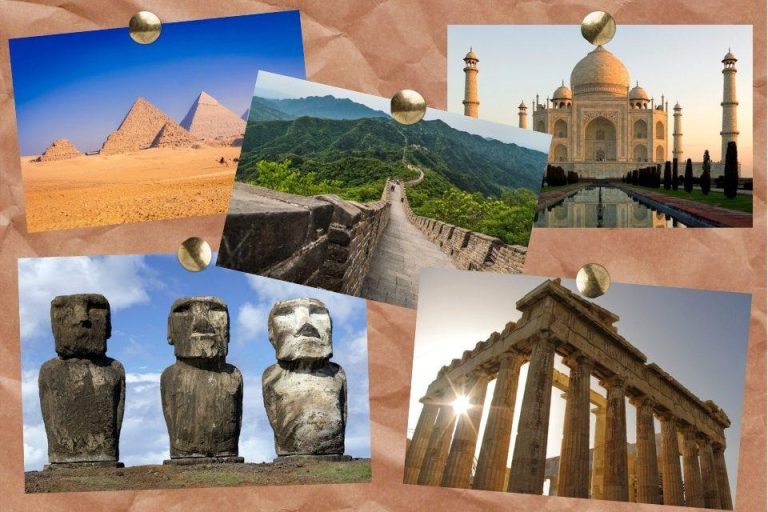From ancient temples carved into desert cliffs to historic port cities threatened by rising seas, UNESCO World Heritage Sites are back in the spotlight as climate change, conflict, and mass tourism test the world’s most treasured places. Nations continue to seek the prestige of inscription even as the list of properties “in danger” grows, sharpening debate over how to protect heritage without freezing it in time.
Established under the 1972 World Heritage Convention, the register now spans more than 1,100 cultural and natural sites across over 160 countries, each recognized for “Outstanding Universal Value.” The designation brings global attention and economic opportunity, but also binding obligations to conserve, monitor, and report on a site’s condition.
This article examines what World Heritage status really means-how it shapes identity, diplomacy, and local livelihoods-and why the cultural significance of these places extends far beyond tourism brochures, touching on questions of memory, resilience, and shared history.
Table of Contents
- UNESCO Roster Grows as Countries Harness Heritage for Identity Tourism and Soft Power
- Investigations Reveal Overtourism Climate Stress and Conflict Threatening Rituals Languages and Architecture
- Experts Urge Visitor Caps Time Ticketing Heritage Impact Assessments Local Revenue Sharing and Climate Adaptation Plans
- Key Takeaways
UNESCO Roster Grows as Countries Harness Heritage for Identity Tourism and Soft Power
In the latest cycle of inscriptions, governments are leveraging new and long-standing designations to project image, attract investors, and steer visitor flows toward narratives that reinforce national identity. Cultural ministries and tourism boards are aligning conservation budgets with place-branding, bundling historic quarters, sacred sites, and industrial landscapes into curated corridors that appeal to both domestic pride and diaspora travel. Diplomats cite heritage diplomacy in trade talks, while city mayors report spikes in cultural events, academic exchanges, and film shoots tied to newly recognized districts. Analysts note a pivot from quantity to quality, with destination managers trialing capacity caps, dynamic pricing, and community co-ownership models to guard authenticity. As climate risks mount, nominations increasingly showcase resilience-water systems, agro-terraces, and vernacular architecture-as living solutions, reframing safeguarding as a strategic asset in the global marketplace of stories.
- Identity framing: official narratives foreground minority artisans, pilgrimage routes, and historic foods to consolidate national storytelling.
- Soft-power toolkits: traveling exhibitions, cultural visas, and co-produced festivals extend influence beyond borders.
- Digital reach: AR guides, multilingual archives, and open data maps broaden access while shaping visitor behavior.
- Economic linkage: heritage corridors connect small enterprises to premium markets through certification and traceability.
- Safeguarding first: funding ties to conservation benchmarks and benefit-sharing to counter overtourism and displacement.
Investigations Reveal Overtourism Climate Stress and Conflict Threatening Rituals Languages and Architecture
New cross-border inquiries indicate a converging triad of pressures-overtourism, climate stress, and armed conflict-is accelerating losses across renowned heritage corridors, with investigators documenting festivals curtailed by heat and security curfews, minority tongues sidelined by market-driven lingua francas, and landmark façades eroded by footfall, salt crystallization, and shock vibrations; curators report that emergency stabilization is outpacing planned conservation, insurance premiums are climbing, and community bearers of tradition are being displaced, even as authorities trial timed entry, resident quotas, and digital monitoring to keep sites open without exhausting their cultural core.
- Rituals at risk: processions rerouted, night ceremonies compressed, and sacred calendars disrupted by extreme heat, wildfire smoke, and security lockdowns.
- Languages under strain: outmigration and short-stay economies privileging tourist-facing scripts, while elder knowledge keepers face displacement and declining transmission spaces.
- Architecture compromised: micro-erosion from crowd surges, salt and humidity driving masonry decay, flood and wildfire events, and looting amid conflict and governance vacuums.
- Governance gaps: visitor caps undermined by cruise scheduling, viral geotagging, and informal rentals; reconstruction contracts fast-tracked without local consent or heritage science.
- Adaptive responses: dynamic ticketing, geofenced flows, heat-mitigation retrofits, 3D documentation and digital twins, community stewardship stipends, and risk protocols to shield both people and place.
Experts Urge Visitor Caps Time Ticketing Heritage Impact Assessments Local Revenue Sharing and Climate Adaptation Plans
Policy analysts and conservation leaders are pressing for a pivot from promotion to protection at celebrated cultural landmarks, warning that unchecked crowds, resident pushback, and climate shocks are eroding both authenticity and fabric. Draft measures under review would pair enforceable use thresholds with smarter scheduling, require systematic risk reviews before any new infrastructure, guarantee equitable financial returns for host communities, and mandate preparedness for heat, floods, and fire. Officials signal accelerated pilots as early as the next high season, with transparent dashboards tracking footfall, CO₂, and conservation status-and sanctions for non-compliance.
- Visitor limits: Dynamic caps tied to real-time carrying-capacity models, with temporary closures when thresholds are met.
- Timed entry: Staggered admissions to flatten peaks, incentivize off-peak slots, and protect fragile interiors.
- Heritage risk assessments: Independent, pre-permit evaluations of cultural, social, and environmental impacts, with public disclosure.
- Local revenue sharing: Ring-fenced levies and concession fees redirected to community stewardship, livelihoods, and traditional custodians.
- Climate adaptation: Site-specific resilience plans-cooling and shade infrastructure, water and fire management, evacuation routes, and insurance reform.
Key Takeaways
As the roster of World Heritage sites grows, so do the pressures that shape their survival-from climate change and conflict to overtourism and underfunding. Beyond the accolades, inscription carries ongoing obligations: credible management plans, community consent, and steady financing. Experts say the sites’ cultural value is only as durable as the policies and people who protect them.
With new nominations under review and several properties facing potential inclusion on the List of World Heritage in Danger, the next round of decisions will test how effectively the system balances visibility with vigilance. For millions who live in and around these places, recognition is not an endpoint but a starting line, tying local identities to global stewardship. Whether these landmarks endure as living heritage or fade into cautionary tales will hinge on choices made in the months and years ahead.


